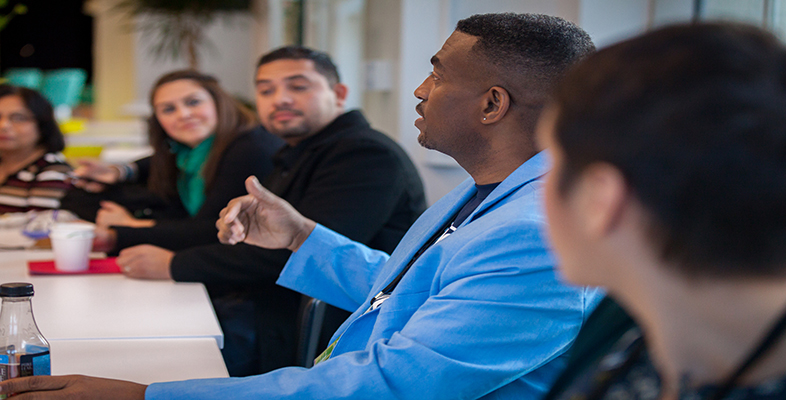1.6 Reading activity
Read the following extract from 2003 PACTE paper [Tip: hold Ctrl and click a link to open it in a new tab. (Hide tip)] ‘Building a Translation Competence Model’ to find out more about what each sub-competence refers to, then answer the questions below to check your understanding.
Building a Translation Competence Model
Translation competence is the underlying system of knowledge needed to translate. It includes declarative and procedural knowledge, but the procedural knowledge is predominant. It consists of the ability to carry out the transfer process from the comprehension of the source text to the re-expression of the target text, taking into account the purpose of the translation and the characteristics of the target text readers. It is made up of five sub- competencies (bilingual, extra-linguistic, knowledge about translation, instrumental and strategic) and it activates a series of psycho-physiological mechanisms.
The bilingual sub-competence. Predominantly procedural knowledge needed to communicate in two languages. It includes the specific feature of interference control when alternating between the two languages. It is made up of pragmatic, socio-linguistic, textual, grammatical and lexical knowledge in the two languages.
Pragmatic knowledge is knowledge of the pragmatic conventions needed to carry out language acts that are acceptable in a given context; they make it possible to use language to express and understand linguistic functions and speech acts. Socio-linguistic knowledge is knowledge of the socio-linguistic conventions needed to carry out language acts that are acceptable in a given context; this includes knowledge of language registers (variations according to field, mode and tenor) and of dialects (variations according to geographical, social and temporal dialects). Textual knowledge is knowledge of texture (coherence and cohesion mechanisms) and of different genres with their respective conventions (structure, language features, etc.). Grammatical-lexical knowledge is knowledge of vocabulary, morphology, syntax andphonology/graphology.
Extra-linguistic sub-competence. Predominantly declarative knowledge, both implicit and explicit, about the world in general and special areas. It includes:
(1) bicultural knowledge (about the source and target cultures); (2) encyclopaedic knowledge (about the world in general); (3) subject knowledge (in special areas).
Knowledge about translation sub-competence. Predominantly declarative knowledge, both implicit and explicit, about what translation is and aspects of the profession. It includes: (1) knowledge about how translation functions: types of translation units, processes required, methods and procedures used (strategies and techniques), and types of problems; (2) knowledge related to professional translation practice: knowledge of the work market (different types of briefs, clients and audiences, etc.).
Instrumental sub-competence. Predominantly procedural knowledge related to the use of documentation sources and information and communication technologies applied to translation: dictionaries of all kinds, encyclopaedias, grammars, style books, parallel texts, electronic corpora, searchers, etc.
Strategic sub-competence. Procedural knowledge to guarantee the efficiency of the translation process and solve the problems encountered. This is an essential sub-competence that affects all the others and causes inter-relations amongst them because it controls the translation process. Its functions are: (1) to plan the process and carry out the translation project (choice of the most adequate method); (2) to evaluate the process and the partial results obtained in relation to the final purpose; (3) to activate the different sub-competencies and compensate for deficiencies in them; (4) to identify translation problems and apply procedures to solve them.
Psycho-physiological components. Different types of cognitive and attitudinal components and psycho-motor mechanisms. They include: (1) cognitive components such as memory, perception, attention and emotion; (2) attitudinal aspects such as intellectual curiosity, perseverance, rigour, critical spirit, knowledge of and confidence in one’s own abilities, the ability to measure one’s own abilities, motivation, etc.; (3) abilities such as creativity, logical reasoning, analysis and synthesis, etc.
Activity 2
a.
is mainly declarative and relates to a good command of grammar and vocabulary in the foreign language.
b.
is mainly procedural and relates to the ability to speak languages other than one’s mother tongue.
c.
is mainly procedural and relates to the ability to communicate in two languages without interference.
The correct answer is c.
a.
is mainly declarative and relates to knowledge of the cultures of the source and target language.
b.
is mainly declarative and relates to knowledge of the world, of specific domains of knowledge and of the cultures of the source and target languages.
c.
is mainly procedural and relates to the ability to research information on various domains of knowledge.
The correct answer is b.
a.
is mainly declarative and relates to knowledge of the theory and research into the field of translation studies.
b.
is mainly declarative and includes both knowledge about how to translate and aspects of professional practice.
c.
is mainly procedural and relates to methods and procedures used when translating.
The correct answer is b.
a.
is mainly declarative and relates to the use of specific translation tools.
b.
is mainly procedural and includes the ability to find information using electronic tools.
c.
is mainly procedural and relates to the use of technology applied to translation and the skills for finding and evaluating information.
The correct answer is c.
a.
is mainly procedural and relates to translators’ problem-solving and evaluation skills.
b.
is mainly procedural and relates to translators’ ability to reflect on their own performance.
c.
is mainly procedural and relates to analytical, organisational and problem-solving skills.
The correct answer is c.
Now that you have an understanding of the skills required to become a professional translator and what is meant by translation competence, let’s find out what it’s like to work as a translator. In the next section you will meet some translators and find out the varied work they undertake.
